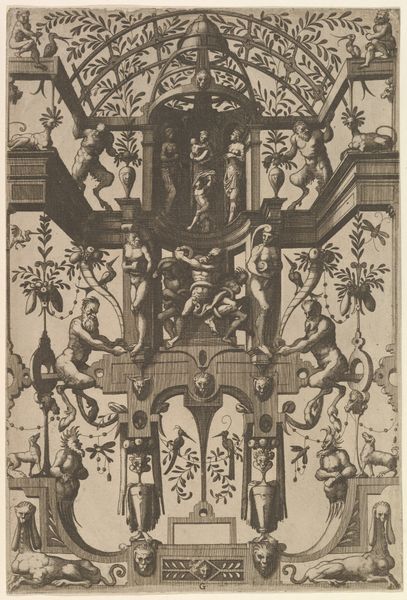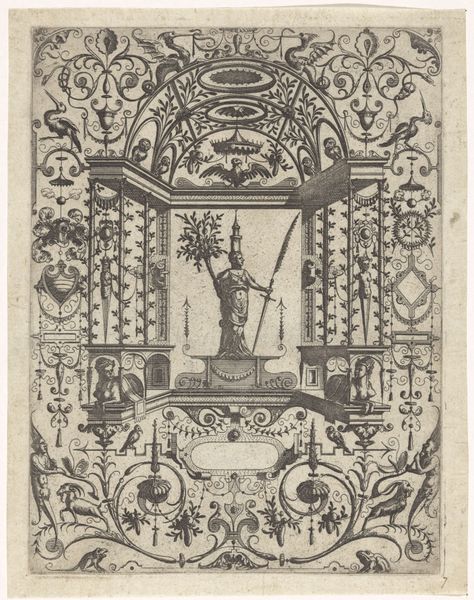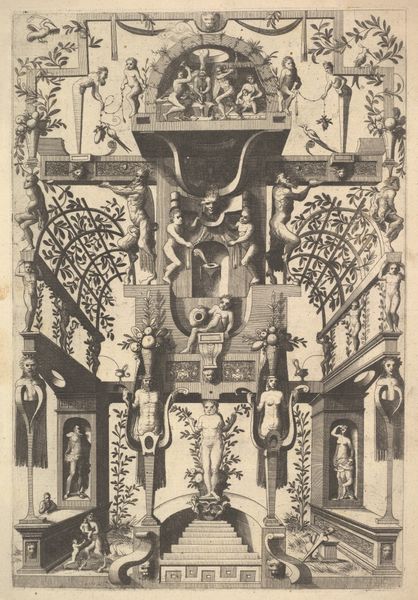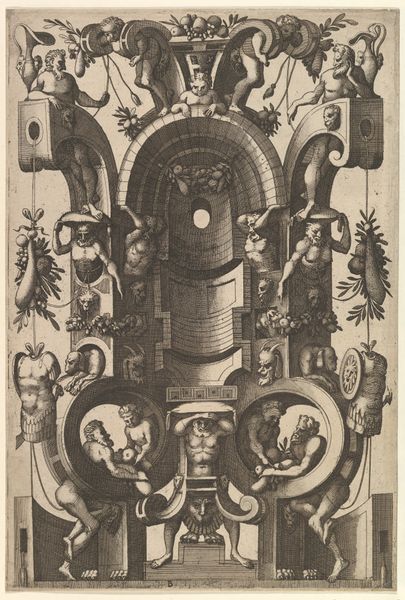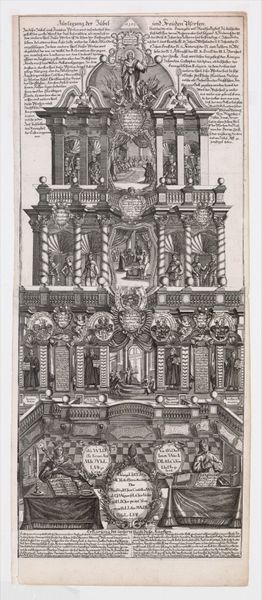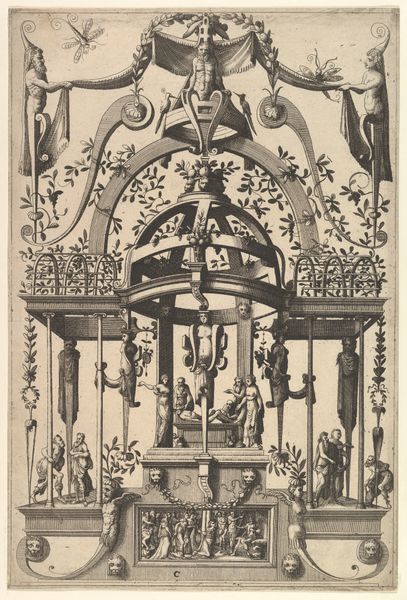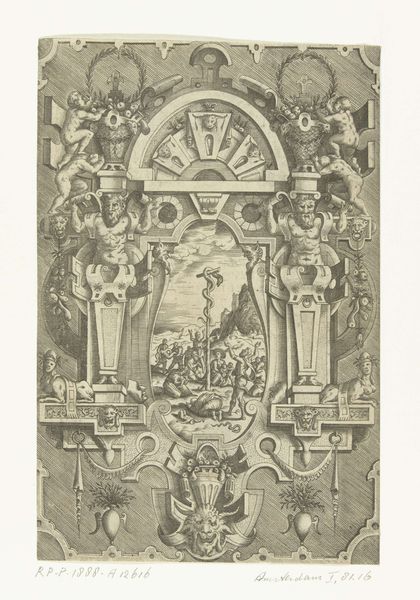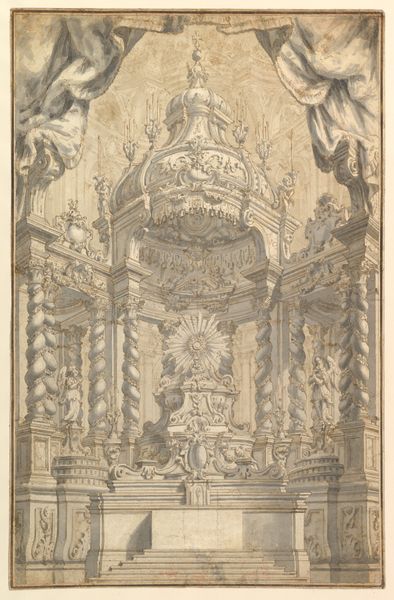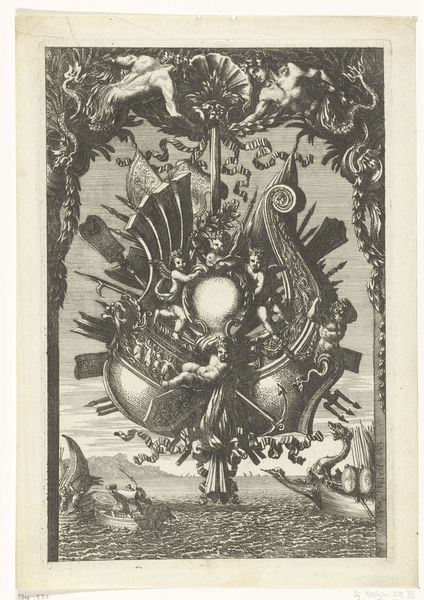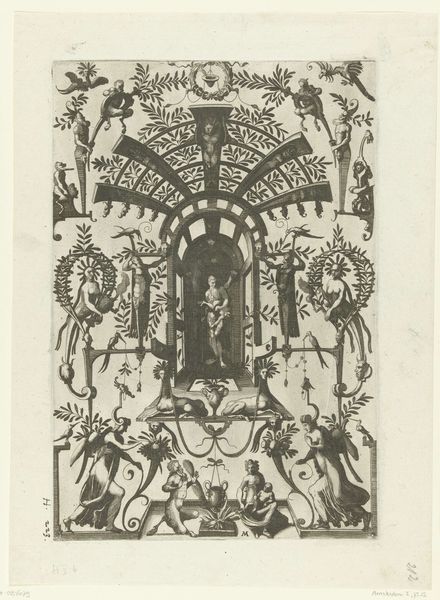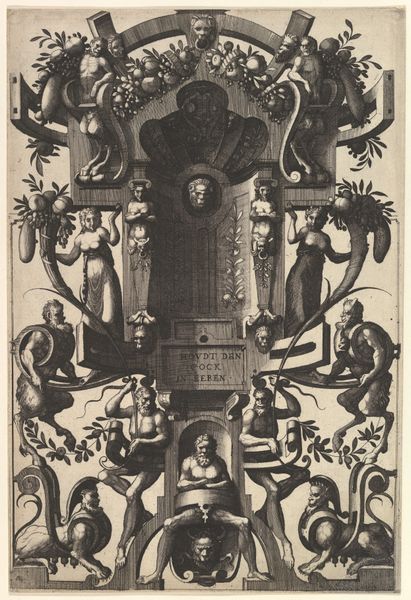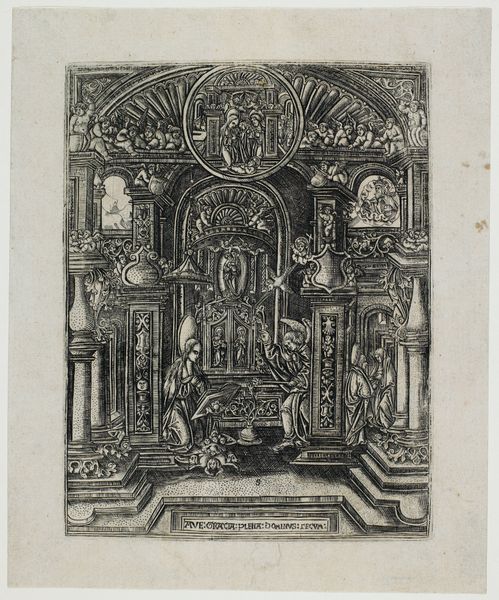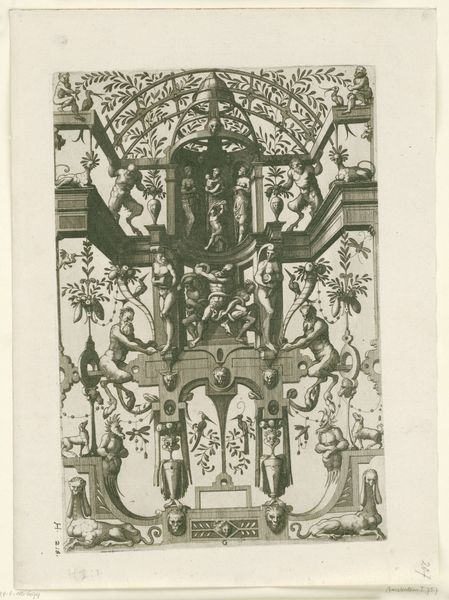
Catafalque for Ferdinand, from an unidentified book 1660 - 1696
0:00
0:00
drawing, print, etching, sculpture, engraving, architecture
#
drawing
#
baroque
#
pen drawing
# print
#
etching
#
sculpture
#
history-painting
#
engraving
#
architecture
Dimensions: Sheet: 7 1/16 × 4 1/2 in. (18 × 11.5 cm)
Copyright: Public Domain
Editor: This drawing, "Catafalque for Ferdinand" by Gaspar Bouttats, made sometime between 1660 and 1696, depicts an elaborate memorial structure, mixing architecture, sculpture and prints. It's incredible, almost overwhelmingly ornate! What catches your eye about this piece? Curator: It’s the explicit display of power through materiality that interests me. Look at the various printing processes employed—etching and engraving—layered onto the architecture, essentially democratizing what would have been an ephemeral spectacle of wealth and status. These prints circulate. Editor: Democratizing? How so? I mean, this imagery is so specifically about Ferdinand, not exactly relatable, is it? Curator: Not relatable in terms of subject, but consider the materials. While the catafalque itself, built for the elites, would have been available for a brief time for select viewership, these prints and drawings take that imagery into other social spaces, extending the reach of power. Think about the labor involved—the artisans meticulously crafting each line, and the networks distributing it. The very paper itself signifies accessibility to information. Editor: I see, it’s about access to the *image* of power, not necessarily the power itself. So, are you saying the value lies less in commemorating Ferdinand, and more in the act of reproducing and disseminating this imagery using different printing processes? Curator: Exactly! Consider the social function of Baroque art beyond simple commemoration. It's about visually asserting control, achieved here by the meticulous labor of numerous artisans engaged in repetitive, reproducible tasks and then multiplied using printing. And it gets the idea of ‘Ferdinand’ into many hands beyond the elite court. It makes me think of advertising or propaganda. What do you make of that comparison? Editor: I guess both rely on repeated exposure! That’s given me a whole new perspective on how to view historical drawings – seeing it through the lens of labor and accessibility makes it much more dynamic than just a historical record. Thanks! Curator: Indeed. Thinking about materiality reframes the work as part of a broader network of production and consumption. There’s always more to learn about the power structures embedded in images.
Comments
No comments
Be the first to comment and join the conversation on the ultimate creative platform.
